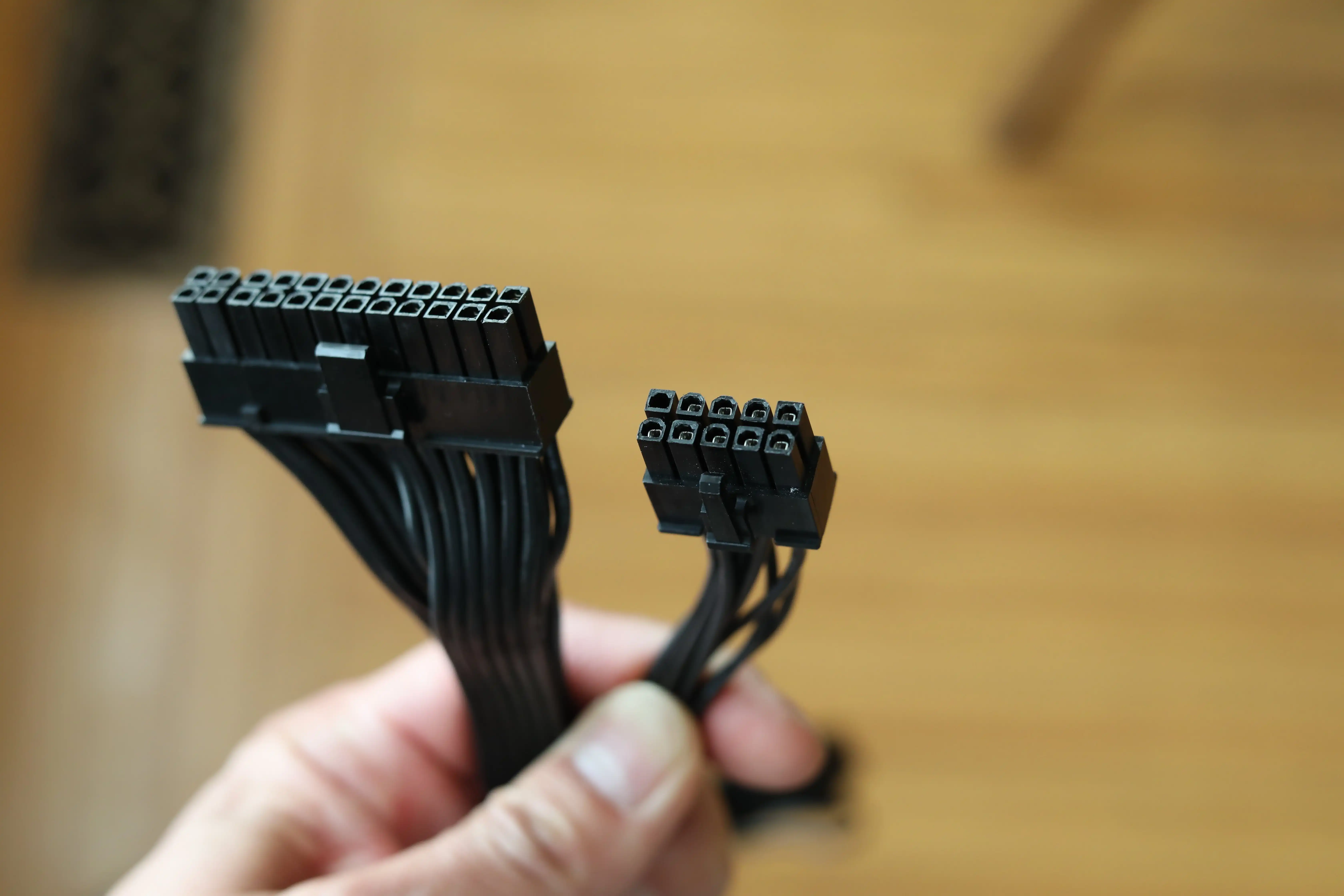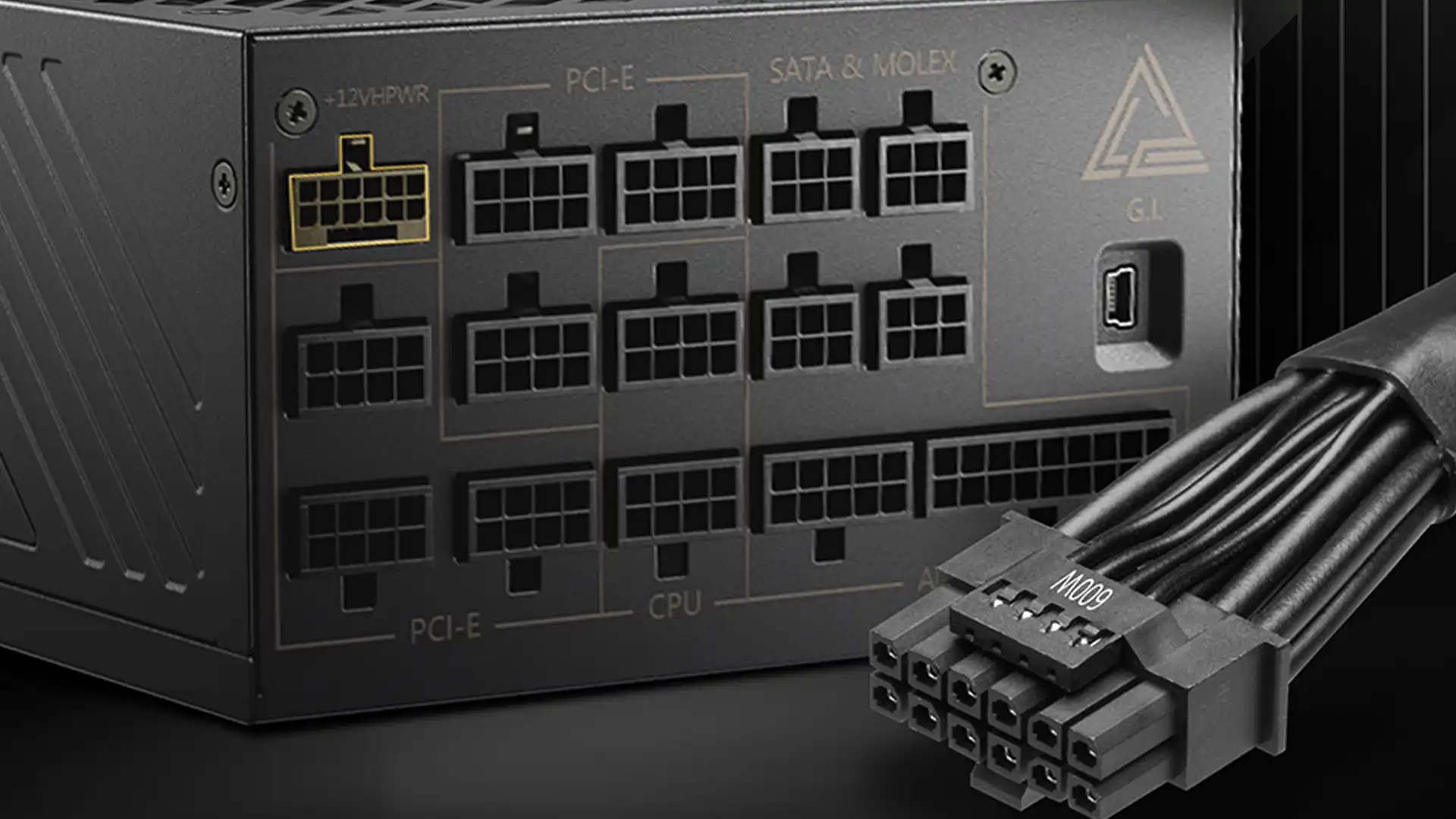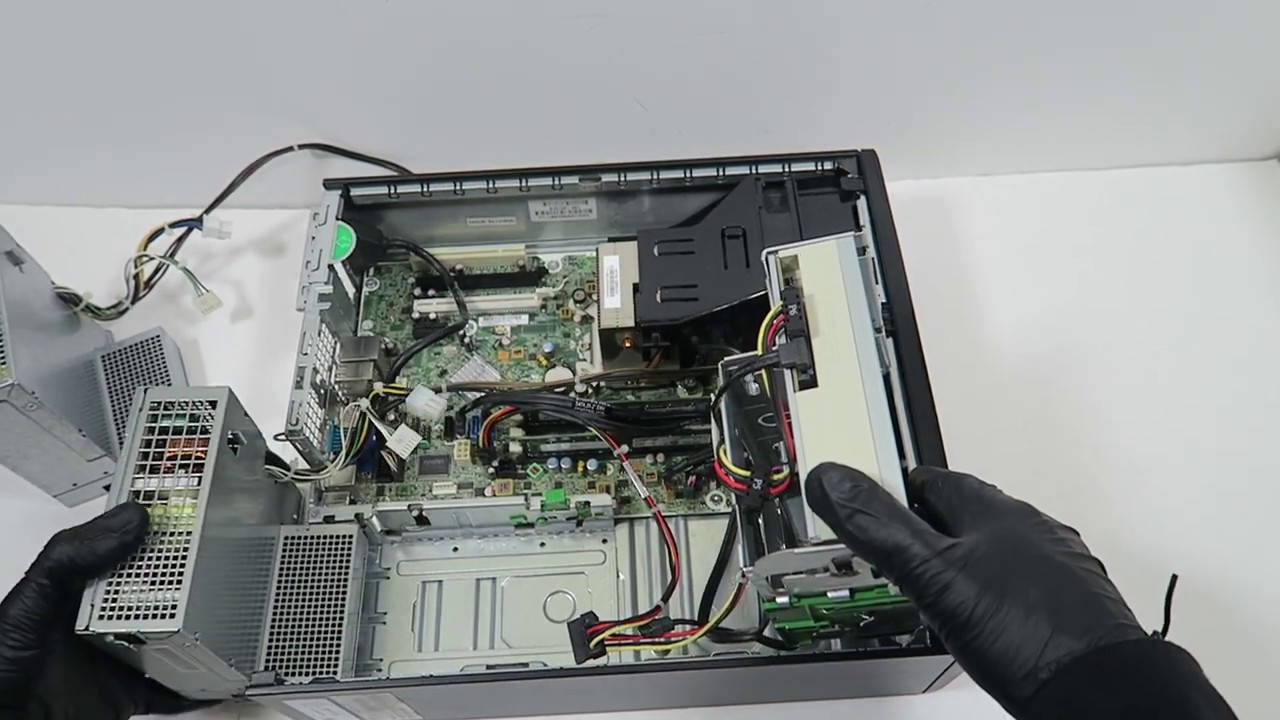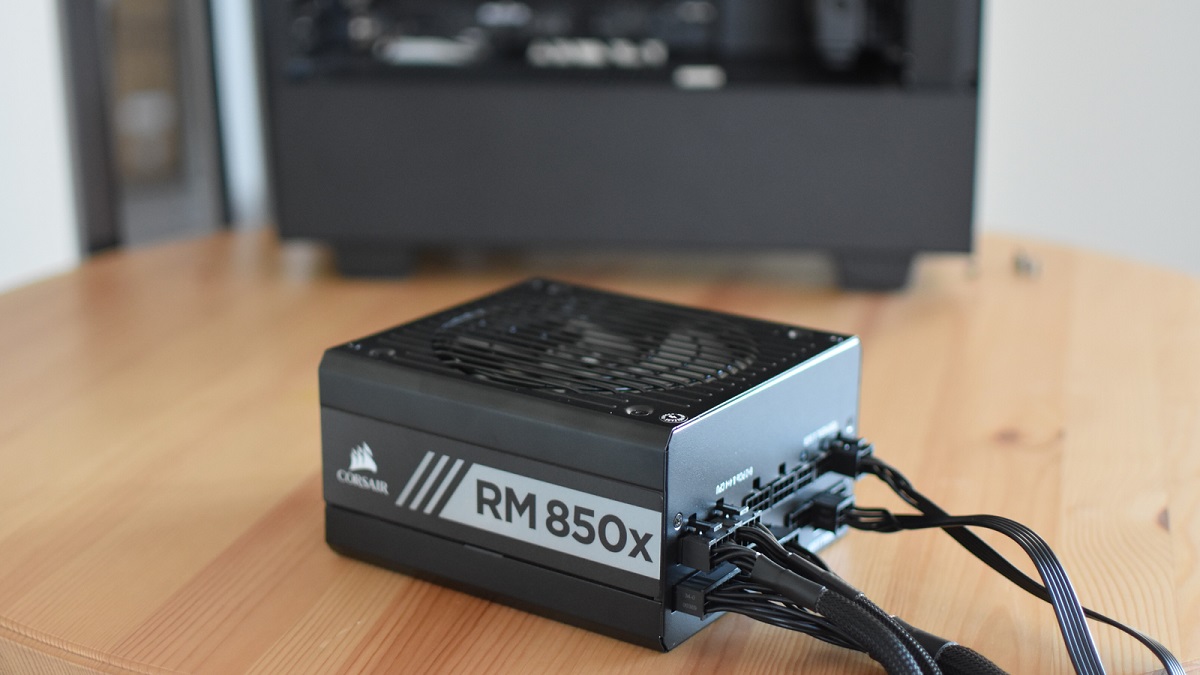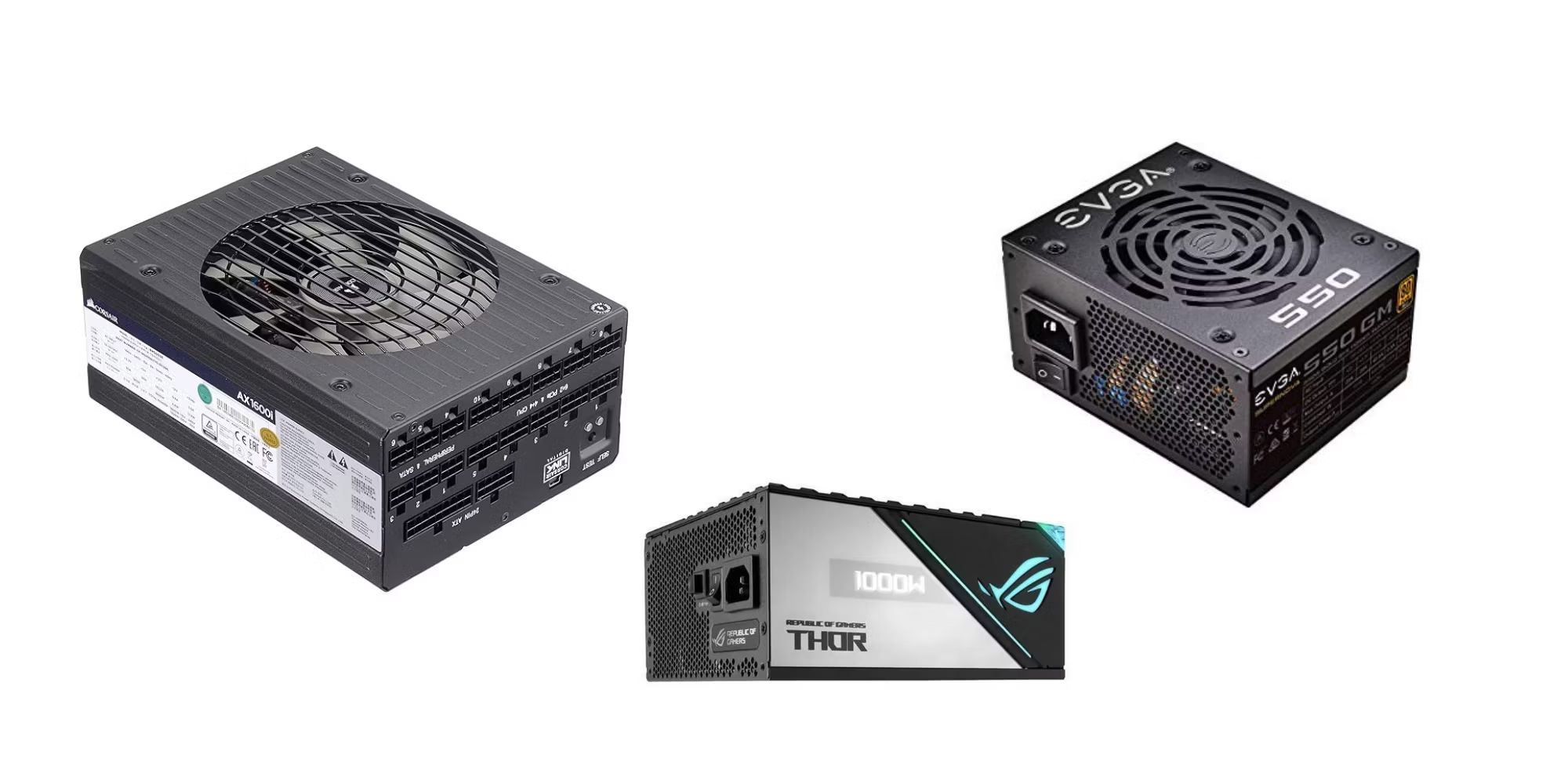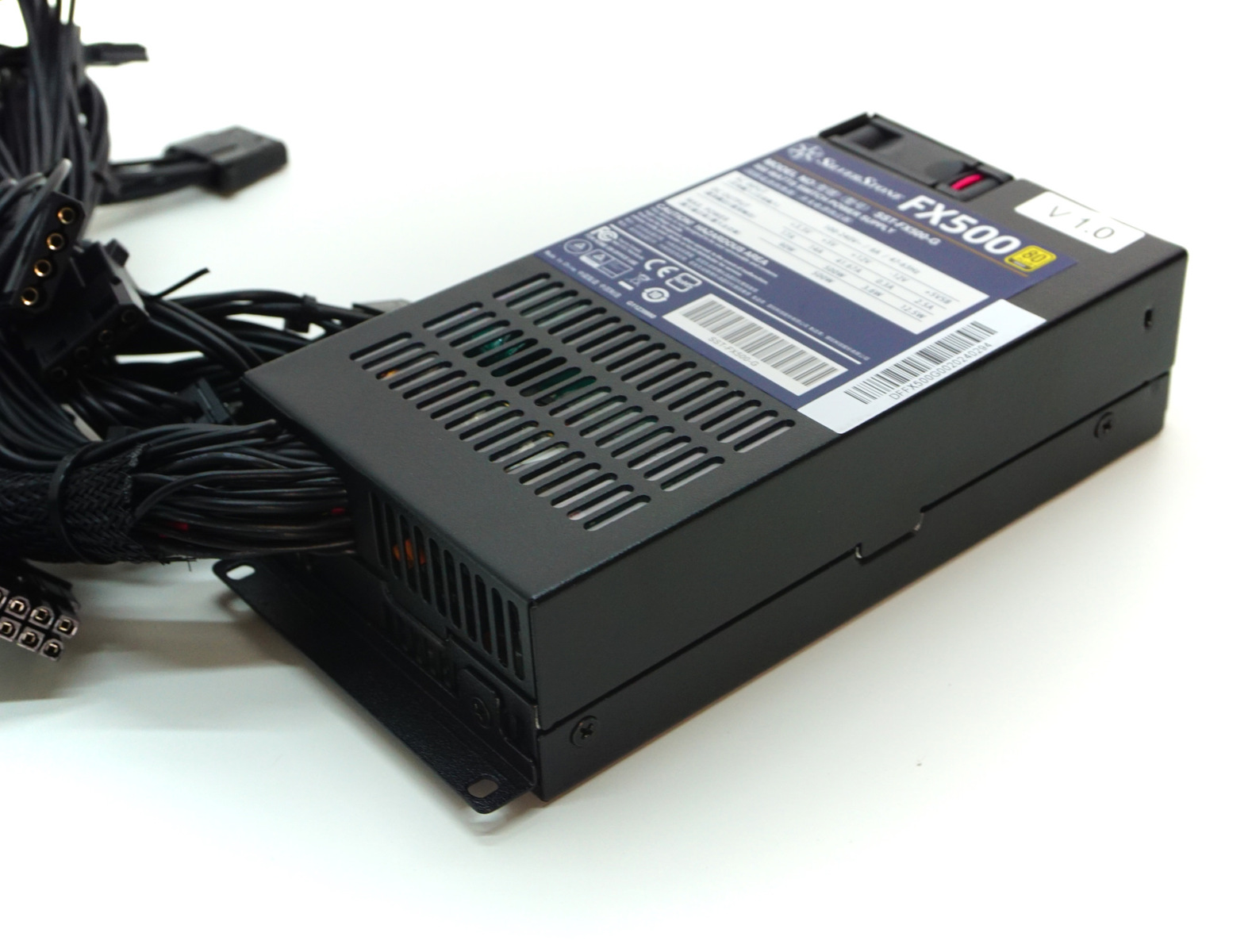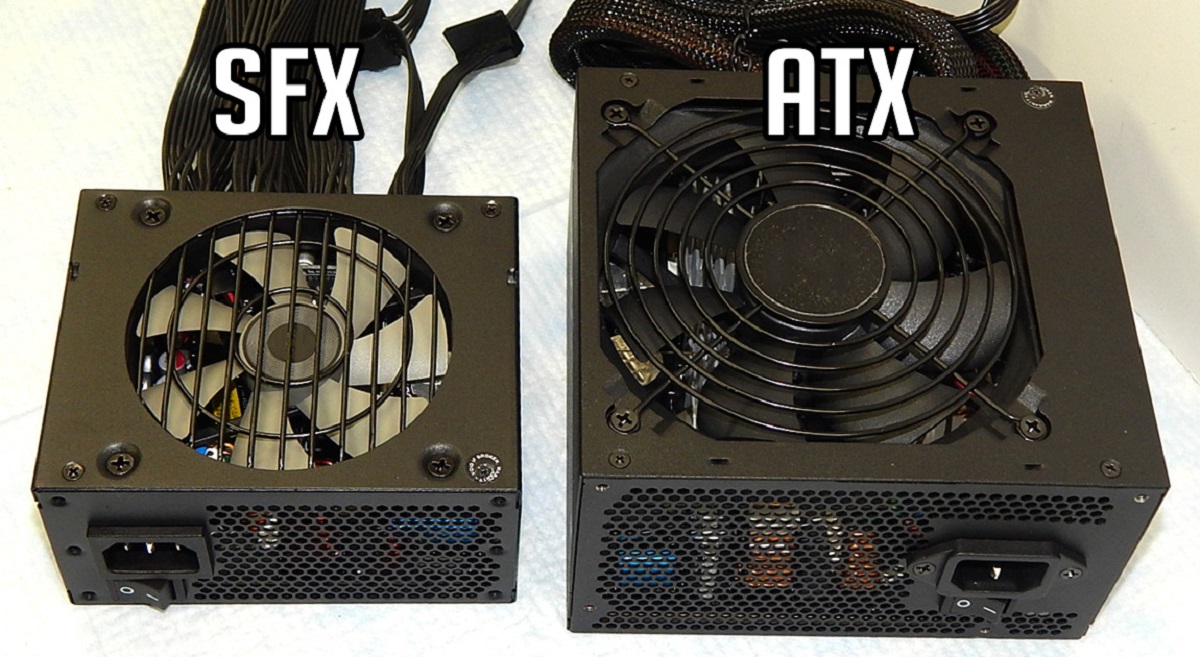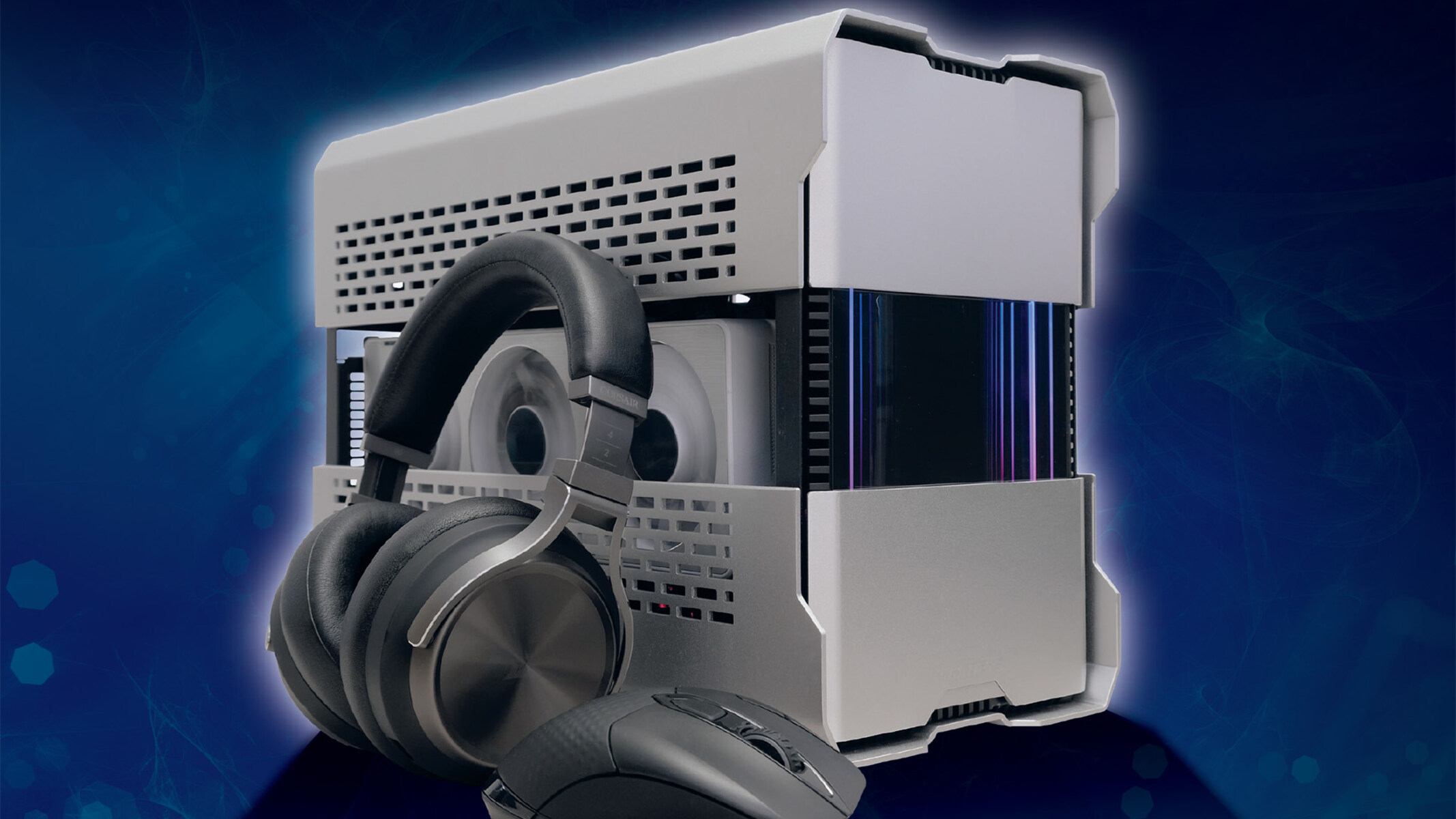Introduction
When it comes to powering and managing the various components of a computer, the power supply is a crucial component. And when it comes to power supplies, the ATX (Advanced Technology eXtended) standard is the most widely used and recognized specification. Whether you are a computer enthusiast, a DIY builder, or a technology professional, understanding what ATX is and its significance for a power supply unit (PSU) is essential.
The ATX standard was developed by Intel in 1995 as an evolution of the previous AT (Advanced Technology) standard. It was created to address the growing need for more power, better cooling, and enhanced functionality required by modern computer systems. Since its introduction, ATX has become the de facto standard for power supplies, ensuring compatibility and interoperability between different components.
The history of ATX is closely tied to the development of computer hardware. As technology advanced, CPUs, graphics cards, and other components demanded more power and efficiency. The ATX standard emerged as a response to these evolving needs, providing a standardized form factor and set of specifications for power supplies.
The key features of ATX include its physical dimensions, which are standardized to ensure compatibility and fit into computer cases seamlessly. ATX power supplies are typically rectangular in shape, with a standard height, width, and depth. This allows these power supplies to be used in a wide range of computer systems, from desktops to servers.
In addition to the form factor, ATX power supplies also offer various features to enhance system performance and stability. These features include multiple rails for distributing power to different components, active power factor correction (PFC) for improved efficiency, and overcurrent, overvoltage, and overload protection mechanisms to safeguard the system against potential damage.
The ATX specifications set clear guidelines for the power supply’s voltage outputs, efficiency levels, and energy-saving capabilities. These specifications ensure that the power supply delivers a consistent and reliable power output, providing the necessary voltages and currents to the computer’s components while minimizing energy wastage.
ATX Definition
ATX, which stands for Advanced Technology eXtended, is a standard specification for computer power supplies and motherboards. It provides a set of guidelines and requirements for the physical dimensions, connectors, power capacities, and other features of these components. The ATX standard was introduced by Intel in 1995, replacing the older AT (Advanced Technology) standard, and has since become the industry standard for power supplies and motherboards.
ATX defines the physical dimensions of a power supply, ensuring compatibility with different computer cases. The standard specifies a rectangular shape with standardized height, width, and depth measurements. This allows ATX power supplies to fit into various computer systems, from desktops to servers, without any compatibility issues.
ATX also specifies the connectors that a power supply should have to interface with other components. These connectors include the 24-pin ATX motherboard connector, which provides power to the motherboard, and additional connectors for peripherals such as hard drives, optical drives, and graphics cards. The ATX standard ensures that all necessary power connections are available for the proper functioning of the system.
The ATX standard also provides guidelines for power capacities and efficiency levels. It defines the voltage outputs that a power supply should deliver, such as +12V, +5V, and +3.3V, with specific tolerances. This ensures that the power supply provides a stable and reliable power output to the computer’s components. Additionally, ATX requires power supplies to meet certain efficiency levels, such as 80 Plus certification, to promote energy efficiency and reduce wastage.
Another important aspect of ATX is its support for various features and technologies. For example, ATX power supplies may include modular cabling, which allows users to connect only the cables they need, reducing clutter and improving airflow. ATX power supplies also support features like active power factor correction (PFC) to enhance efficiency and protection mechanisms like overcurrent and overvoltage protection to safeguard the system against electrical anomalies.
In essence, ATX is a comprehensive standard that ensures compatibility, reliability, and efficiency in power supplies. It provides guidelines and requirements for the physical dimensions, connectors, power capacities, and features of power supplies, enabling seamless integration with other computer components. The consistent implementation of the ATX standard allows for easier upgrades, replacements, and maintenance of power supplies, making it an essential element of modern computing systems.
History of ATX
The ATX (Advanced Technology eXtended) standard was introduced by Intel in 1995 as a successor to the original AT (Advanced Technology) standard. The need for a new standard arose as computer technology advanced, demanding more power, better cooling, and enhanced functionality. The ATX standard aimed to address these evolving requirements and provide a standardized framework for power supplies and motherboards.
The original AT standard, introduced in the 1980s, featured a large, bulky form factor and limited power capabilities. As processors became more powerful and computer systems grew in complexity, the shortcomings of the AT standard became evident. The ATX standard was developed to overcome these limitations and enable better compatibility, performance, and efficiency.
One of the key changes introduced by the ATX standard was the redesigned motherboard form factor. The ATX motherboards featured a rectangular shape with standardized dimensions, allowing for more efficient component placement and better airflow within the computer case. This layout improvement facilitated the implementation of larger and more powerful components, including CPUs, graphics cards, and expansion cards.
In addition to the physical changes, ATX also brought significant advancements in power supply technology. The standard introduced a new power connector, the 20-pin ATX motherboard connector, which replaced the older AT connector and provided a more secure and reliable connection. The ATX power supplies also introduced new features such as the soft power switch, which allowed the computer to be turned on and off through software commands instead of the physical switch.
Over the years, the ATX standard has continued to evolve to meet the growing demands of computer systems. Variants such as microATX, FlexATX, and mini-ITX have been introduced to cater to different form factors and compact designs. These variations have allowed for the development of smaller and more portable computer systems while still maintaining the compatibility and functionality of the ATX standard.
With each iteration, the ATX standard has incorporated new technologies and features to improve system performance and efficiency. These include enhancements such as improved power delivery, support for multi-core processors, increased power capacities, and greater energy efficiency. The ATX standard has played a crucial role in advancing the capabilities of computer systems and enabling the development of more powerful and efficient components.
Today, the ATX standard remains the dominant and most widely used specification for power supplies and motherboards. Its widespread adoption ensures compatibility and interchangeability between different components, making it easier for users to upgrade or replace parts within their systems. The continuous evolution and advancement of the ATX standard underscore its importance in driving the progress of modern computer technology.
ATX Features
The ATX (Advanced Technology eXtended) standard offers several key features that contribute to its popularity and widespread adoption in the computer hardware industry. These features encompass both the physical design and technical specifications of ATX power supplies and motherboards, ensuring compatibility, efficiency, and performance.
One of the primary features of ATX is its standardized form factor. ATX power supplies and motherboards are designed with specific physical dimensions, allowing them to fit into a wide range of computer cases. The rectangular shape, along with standardized height, width, and depth measurements, ensures easy integration and compatibility with computer cases, promoting ease of use and flexibility in system builds and upgrades.
ATX power supplies also offer multiple voltage rails, including +12V, +5V, and +3.3V, among others. These rails serve different components within the system, providing the required voltages and currents for stable and efficient operation. The presence of multiple rails allows for a more balanced distribution of power and prevents excessive loads on a single rail, resulting in improved system stability and reduced risks of power-related issues.
Another notable feature of ATX power supplies is their support for active power factor correction (PFC). PFC ensures that the power supply draws power more efficiently from the electrical grid, reducing energy wastage and improving overall efficiency. This feature not only helps in reducing electricity bills but also aligns with energy-saving initiatives and environmental concerns.
ATX power supplies are equipped with protection mechanisms to safeguard the system and its components. These protections include overcurrent protection, overvoltage protection, and overload protection. Overcurrent protection prevents excessive current flow that could damage the components, while overvoltage protection guards against voltage surges. Additionally, overload protection kicks in when the power supply is under excessive load, preventing overheating and potential damage.
Modular cabling is another feature found in many ATX power supplies. This feature allows users to connect only the necessary cables to their system, reducing cable clutter and improving airflow within the computer case. Modular cabling not only enhances cable management but also contributes to better cooling, which helps in maintaining optimal system performance and longevity.
The ATX standard also ensures standardized connectors for power supplies and motherboards. The 24-pin ATX motherboard connector is a staple in ATX power supplies, providing power to the motherboard and ensuring a reliable connection between the two components. Additional connectors, such as PCIe connectors for graphics cards and SATA connectors for storage devices, further enhance compatibility and allow for the integration of a wide range of components.
In summary, the features of ATX power supplies and motherboards contribute to their popularity and widespread use. The standardized form factor, multiple voltage rails, active power factor correction, protection mechanisms, modular cabling, and standardized connectors ensure compatibility, efficiency, and reliability in computer systems. These features enable builders and users to create and maintain systems that meet their specific needs with ease and confidence.
ATX Specifications
The ATX (Advanced Technology eXtended) standard encompasses various specifications that define the requirements and capabilities of power supplies and motherboards. These specifications ensure consistency, compatibility, and optimal performance across different hardware components within a computer system. Understanding these specifications is crucial for selecting the right power supply and ensuring the proper functioning of the system.
ATX power supplies are required to deliver specific voltage outputs, which include +12V, +5V, +3.3V, -12V, and +5V standby. These voltages are essential for powering different components of the computer, such as the CPU, memory, storage devices, and peripherals. The ATX standard sets tolerances for these voltage outputs, ensuring that they remain within acceptable ranges to maintain system stability and prevent damage to the components.
Efficiency is an important consideration in power supplies, as it directly impacts energy consumption and heat generation. The ATX standard mandates that power supplies meet certain efficiency levels, such as the 80 Plus certification. This certification ensures that the power supply operates at a high efficiency, converting electrical power from the outlet into usable power for the computer more effectively, resulting in reduced energy wastage and heat generation.
In terms of power capacity, ATX power supplies come in various wattage ratings, ranging from 300 watts to 1000 watts or more. The wattage rating determines the power supply’s ability to deliver sufficient power to the system’s components. Higher wattage power supplies are recommended for systems with demanding components, such as high-performance processors and graphics cards, while lower wattage power supplies are suitable for basic systems with less power-hungry components.
Connectivity is also a key aspect of ATX specifications. The standard requires power supplies to have a 24-pin ATX motherboard connector, which provides power to the motherboard and is a vital connection for system operation. In addition to the primary connector, power supplies may include various other connectors, such as PCIe connectors for graphics cards, SATA connectors for storage devices, and peripheral connectors for devices like optical drives and fans. The inclusion of these connectors ensures compatibility and enables the integration of a wide range of components into the system.
Cooling is critical for the proper functioning and longevity of computer components. To address this, the ATX standard specifies the inclusion of cooling mechanisms in power supplies. Most ATX power supplies feature a built-in fan, which helps dissipate heat generated by the components and maintain optimal operating temperatures. The fan speed may be automatically controlled based on the power supply’s temperature or manually adjusted to balance cooling performance and noise levels.
Safety is of utmost importance when it comes to electrical devices, and ATX power supplies adhere to several safety standards. These standards include protection mechanisms, such as overcurrent protection, overvoltage protection, and overload protection, which safeguard the system and its components from electrical anomalies. Compliance with safety standards ensures that the power supply is reliable, durable, and safe to use in various environments.
By adhering to these specifications, ATX power supplies and motherboards ensure compatibility, stability, efficiency, and safety in computer systems. This enables users to build and maintain reliable and high-performing systems while having the freedom to choose from a wide range of compatible components based on their specific needs and preferences.
ATX Connectors
ATX (Advanced Technology eXtended) power supplies are equipped with various connectors that facilitate the distribution of power to different components within a computer system. These connectors ensure proper and reliable power delivery, enabling the system to function effectively. Understanding the different ATX connectors is crucial for building and maintaining a system and ensuring compatibility between the power supply and other components.
The primary connector found in ATX power supplies is the 24-pin ATX motherboard connector. This connector provides power to the motherboard and is essential for the system to start and function properly. The 24-pin connector combines the original 20-pin ATX connector with an additional four pins, enabling compatibility with newer motherboards that require more power for their various components and features.
ATX power supplies also feature connectors for peripherals such as storage drives, graphics cards, and additional fans. One commonly used connector is the SATA connector, which provides power to SATA hard drives, SSDs, and optical drives. These connectors have a small, L-shaped design that ensures a secure and reliable connection. The number of SATA connectors can vary depending on the wattage and design of the power supply.
Graphics cards often require additional power beyond what the motherboard can provide. To meet this demand, ATX power supplies are equipped with PCIe (Peripheral Component Interconnect Express) connectors. These connectors come in various configurations, such as 6-pin, 8-pin, or a combination of multiple connectors, depending on the power requirements of the graphics card. The PCIe connectors ensure a stable power supply to the graphics card, enabling it to perform optimally.
Peripheral connectors, which are commonly known as Molex connectors, are found in ATX power supplies to provide power to devices such as fans, case lighting, and other accessories. These connectors are rectangular in shape and feature multiple pins, allowing for a secure connection. While they are less common in modern systems, some peripherals may still require Molex connectors for power.
For efficient and organized cable management, some ATX power supplies feature modular cabling systems. With modular cabling, the power supply comes with detachable cables, allowing the user to connect only the necessary cables to the components. This helps reduce cable clutter inside the computer case and improves airflow, leading to better cooling performance. Modular power supplies generally include modular connectors specific to the power supply model, ensuring a proper and secure connection.
It is important to note that the number and types of connectors in ATX power supplies can vary depending on the wattage, model, and manufacturer. When selecting an ATX power supply, it is essential to consider the requirements of the components in the system and ensure that the power supply has the necessary connectors to support them.
In summary, ATX power supplies are equipped with various connectors that facilitate power distribution to different components within a computer system. These connectors, such as the 24-pin ATX motherboard connector, SATA connectors, PCIe connectors, and Molex connectors, ensure compatibility and reliable power delivery. Understanding the different ATX connectors is crucial for building a properly functioning system and ensuring the compatibility and connectivity of components.
Importance of ATX for a PSU
ATX (Advanced Technology eXtended) is of significant importance for a power supply unit (PSU) due to the standardization and compatibility it brings to computer hardware components. The ATX standard ensures that power supplies are designed with specific dimensions, connectors, and specifications, making them compatible with a wide range of computer cases and motherboards.
One of the key reasons why ATX is important for a PSU is its standardized form factor. ATX power supplies have specific physical dimensions, allowing them to fit into different computer cases seamlessly. This standardized form factor ensures that users can easily find a suitable replacement PSU or upgrade their existing one without worrying about compatibility issues. Additionally, standardized dimensions promote better airflow within the computer case, which is crucial for maintaining optimal cooling and preventing overheating.
ATX also plays a vital role in ensuring compatibility between the PSU and the motherboard. The 24-pin ATX motherboard connector is a standardized requirement for power supplies, providing the necessary power to the motherboard and ensuring a reliable connection. This connector serves as a key link between the PSU and other components, enabling the system to power on and function properly. Without ATX specifications, there would be inconsistencies in connector designs, resulting in compatibility issues between power supplies and motherboards.
Another significance of ATX for a PSU lies in its adherence to specific technical specifications. ATX power supplies are required to meet certain voltage output levels, efficiency requirements, and safety standards. Compliance with these specifications ensures that the power supply delivers reliable and stable power to the components, prevents overloading or damage, and promotes overall system efficiency. Moreover, ATX power supplies often incorporate features such as active power factor correction (PFC) and built-in protection mechanisms like overcurrent and overvoltage protection, enhancing the safety and performance of the PSU.
The ATX standard also promotes standardization and interchangeability of power supplies across different computer systems. This allows users to easily swap out or upgrade their power supplies without having to worry about compatibility issues with other components. It simplifies the process of building, maintaining, and upgrading computer systems, making it more accessible and user-friendly for both individuals and professionals.
Additionally, the ATX standard facilitates better support and compatibility with future technologies and advancements. As hardware technology continues to evolve, the ATX standard can be updated to accommodate new requirements and features. This ensures that power supplies remain compatible with the latest components and can support new technologies, such as higher power demands for advanced processors or graphics cards.
In summary, the ATX standard is of utmost importance for a PSU due to its standardization, compatibility, and adherence to technical specifications. ATX ensures that power supplies have a standardized form factor, compatible connectors, and specific operating parameters, allowing for seamless integration with computer cases and motherboards. It promotes reliability, efficiency, and safety in power delivery while enabling easier system building, upgrading, and maintenance. The significance of ATX for a PSU cannot be understated when it comes to creating a stable and functional computer system.
Benefits of ATX for a PSU
The ATX (Advanced Technology eXtended) standard brings several benefits to a power supply unit (PSU), making it a crucial component in modern computer systems. The adoption and adherence to the ATX standard provide numerous advantages, ranging from compatibility and efficiency to reliability and ease of use.
One of the key benefits of ATX for a PSU is the standardization it brings to power supply form factors. ATX power supplies have specific dimensions, including height, width, and depth, ensuring compatibility with a wide range of computer cases. This standardization enables users to easily find a suitable PSU for their system or upgrade their existing one without worrying about compatibility issues. It also facilitates better airflow within the computer case, reducing the risk of overheating and promoting optimal cooling.
Compatibility is another significant benefit of ATX for a PSU. The ATX standard ensures that power supplies have standardized connectors, such as the 24-pin ATX motherboard connector. This connector is essential for providing power to the motherboard and establishing a reliable connection between the PSU and other components. Compatibility between power supplies and motherboards eliminates the guesswork and simplifies the process of building and upgrading computer systems.
Efficiency is a critical aspect of modern power supplies, and ATX enhances this by setting specific requirements and guidelines. The ATX standard mandates certain efficiency levels, such as the 80 Plus certification, which promotes energy efficiency and minimizes power wastage. Efficient power supplies not only help reduce electricity bills but also contribute to sustainability efforts by minimizing environmental impact.
Reliability is paramount when it comes to power delivery, and ATX ensures the stability and consistency of PSUs. ATX power supplies comply with technical specifications, such as voltage output levels and safety standards, ensuring that the PSU provides reliable power to the system’s components. Additionally, ATX power supplies often incorporate built-in protection mechanisms, such as overcurrent and overvoltage protection, safeguarding the system against potential damage caused by electrical anomalies.
An advantage of ATX for a PSU is its widespread adoption and support in the industry. The ATX standard has become the de facto standard for power supplies, ensuring broad compatibility and interchangeability. This means that users have a wide range of options to choose from when selecting a power supply, making it easier to find a PSU that meets their specific requirements in terms of wattage, connectivity, and features.
The ATX standard also promotes future-proofing and adaptability. As technology advances, the ATX standard can evolve to accommodate new requirements and technologies. This ensures that power supplies remain compatible with the latest components and can support emerging technologies without the need for significant changes or upgrades.
In summary, the benefits of ATX for a PSU are numerous and crucial in modern computer systems. The standardization of form factor and connectors ensures compatibility, making it easier to find and replace PSUs. The adherence to technical specifications promotes efficiency, reliability, and safety, contributing to better power delivery and system stability. The wide industry support and potential for future adaptability make ATX an essential aspect of power supplies, offering users a range of options and the ability to keep up with technological advancements.
Common Issues with ATX
While the ATX (Advanced Technology eXtended) standard for power supplies and motherboards brings numerous benefits, there are some common issues that users may encounter. Being aware of these issues can help users troubleshoot and resolve problems effectively, ensuring the proper functioning of their computer systems.
One common issue with ATX power supplies is compatibility with older motherboards. The ATX standard has evolved over the years, and newer power supplies may have updated connectors or specifications that are not compatible with older motherboards. In such cases, users may need to check compatibility or consider upgrading both the power supply and the motherboard to ensure compatibility and optimal performance.
Another issue users may encounter with ATX power supplies is insufficient power capacity. Computer systems that require high-performance components, such as powerful graphics cards or multiple hard drives, may demand more power than a lower-wattage ATX power supply can provide. This can result in system instability, crashes, or inadequate power output to the components. It is essential to check the power requirements of the system and select a power supply with sufficient wattage to meet those demands.
Inadequate cooling can be another issue related to ATX power supplies. While ATX power supplies are equipped with fans for cooling, insufficient airflow within the computer case can lead to overheating. Improper cable management, blocked vents, or inadequate case fans can restrict the flow of air, causing the power supply to overheat and potentially leading to system instability. Proper cable management and ensuring adequate case ventilation are essential for maintaining optimal cooling performance.
At times, users may experience noise issues with ATX power supplies. While some level of noise is expected due to the operation of fans or other components, excessive noise can be a concern. High-pitched noises, rattling, or grinding sounds may indicate a faulty or failing power supply. In such cases, it is recommended to consult the manufacturer or seek professional assistance to diagnose and resolve the issue.
Another common issue with ATX power supplies is power-related problems, such as voltage fluctuations or inconsistent power delivery. These can cause system instability, crashes, or even damage to components. Users should ensure that the power supply they choose has adequate voltage regulation, stable power outputs, and protection mechanisms, such as overcurrent and overvoltage protection, to mitigate the risk of such issues.
Compatibility with different components can also pose challenges. While the ATX standard promotes compatibility, there may still be variations in power requirements or connector types across different manufacturers or models. It is important to carefully check the compatibility of the power supply connectors with the specific components, such as graphics cards or storage devices, to ensure they can be properly powered and connected.
Finally, user error or improper installation can also lead to issues with ATX power supplies. Incorrect installation, improper connection of cables or connectors, or failure to follow manufacturer guidelines can cause power supply malfunctions or system failures. Thoroughly reading the manuals and instructions, double-checking connections, and seeking expert advice if needed, can help prevent these issues from occurring.
By being aware of these common issues, users can take proactive measures to address and resolve them. Careful consideration of compatibility, wattage requirements, cooling, noise levels, and proper installation can help ensure a smooth and trouble-free experience with ATX power supplies.
Conclusion
The ATX (Advanced Technology eXtended) standard for power supplies and motherboards plays a crucial role in the world of computer hardware. It offers a set of standardized guidelines and specifications that ensure compatibility, efficiency, and reliability in computer systems. From its standardized form factor to its connectors and technical specifications, ATX brings numerous benefits and simplifies the process of building, upgrading, and maintaining computer systems.
The importance of ATX for a power supply unit (PSU) cannot be overstated. Its standardized form factor allows ATX power supplies to fit into various computer cases seamlessly, simplifying the selection and installation process for users. The standardized connectors, such as the 24-pin ATX motherboard connector, ensure compatibility and reliable power delivery to the motherboard and other components.
The ATX standard also enforces specific technical specifications, including voltage output levels, efficiency requirements, and safety standards. Compliance with these specifications ensures stable and efficient power delivery, reducing the risk of system instability or component damage. Built-in protection mechanisms, such as overcurrent and overvoltage protection, further enhance the safety and reliability of ATX power supplies.
ATX power supplies offer several benefits, including compatibility, efficiency, reliability, and ease of use. Their standardized form factor and connectors allow for easy integration with different computer components, promoting seamless compatibility and interchangeability. The requirement for efficiency levels, such as the 80 Plus certification, ensures energy-saving operation and reduced environmental impact.
While ATX brings significant advantages, there are also common issues that users may encounter, such as compatibility with older motherboards, insufficient power capacity, cooling issues, noise problems, power-related concerns, and compatibility challenges with various components. Being aware of these issues can help users troubleshoot and resolve problems effectively, ensuring optimal performance and functionality of their computer systems.
In conclusion, the ATX standard for power supplies and motherboards is a critical component in modern computer systems. It provides a standardized framework that promotes compatibility, efficiency, and reliability. By adhering to the ATX standard, users can confidently select and install power supplies that meet their system requirements, ensuring stable power delivery and optimal performance. With its numerous benefits and industry-wide support, ATX continues to drive advancements in computer hardware technology and simplifies the process of creating and maintaining efficient and reliable computer systems.







